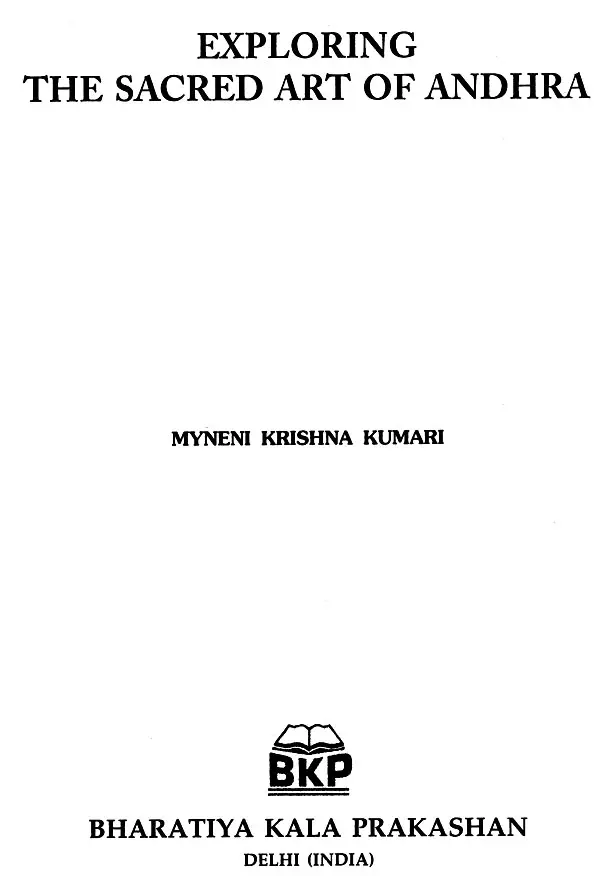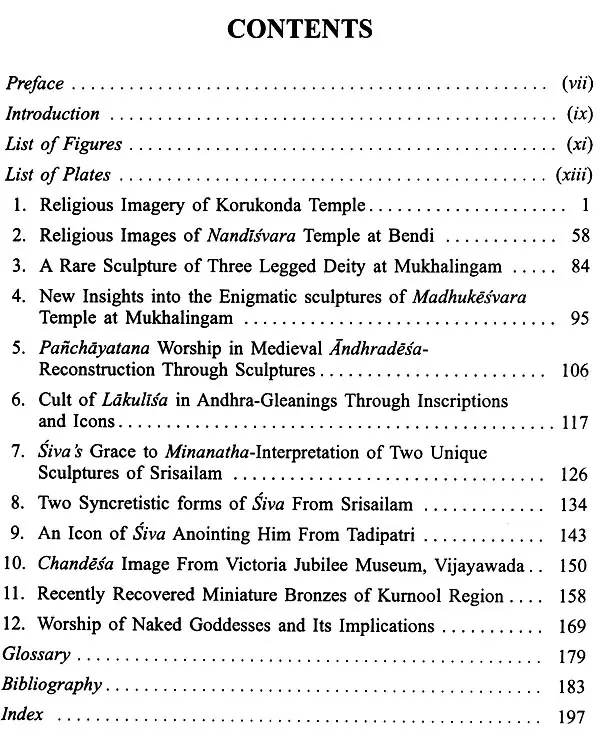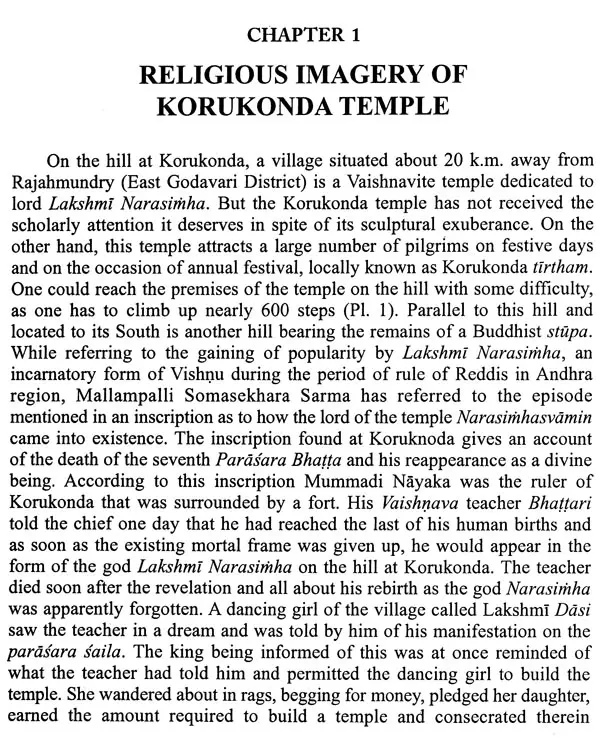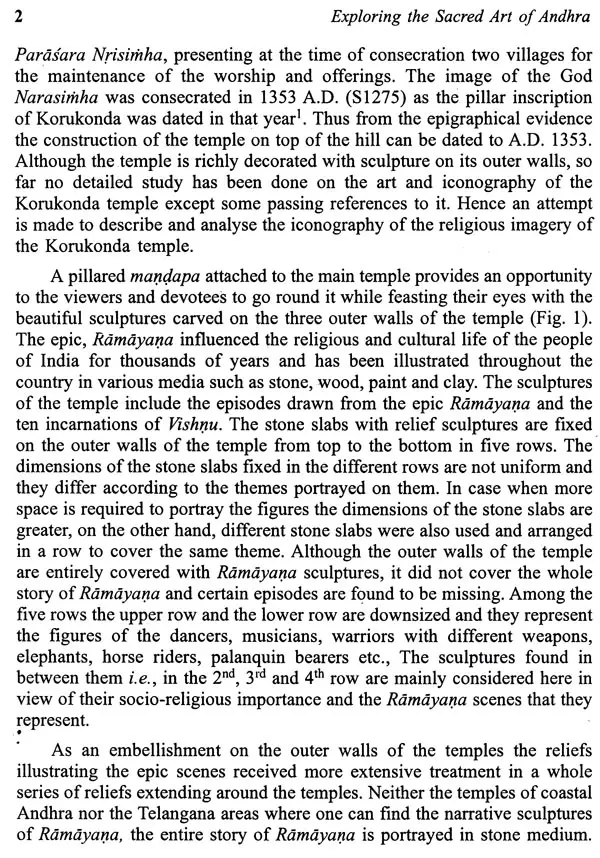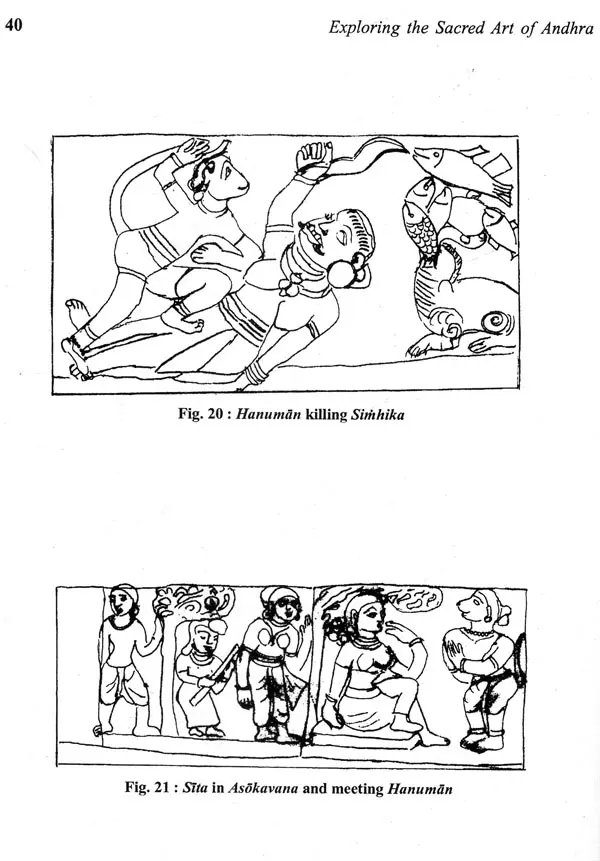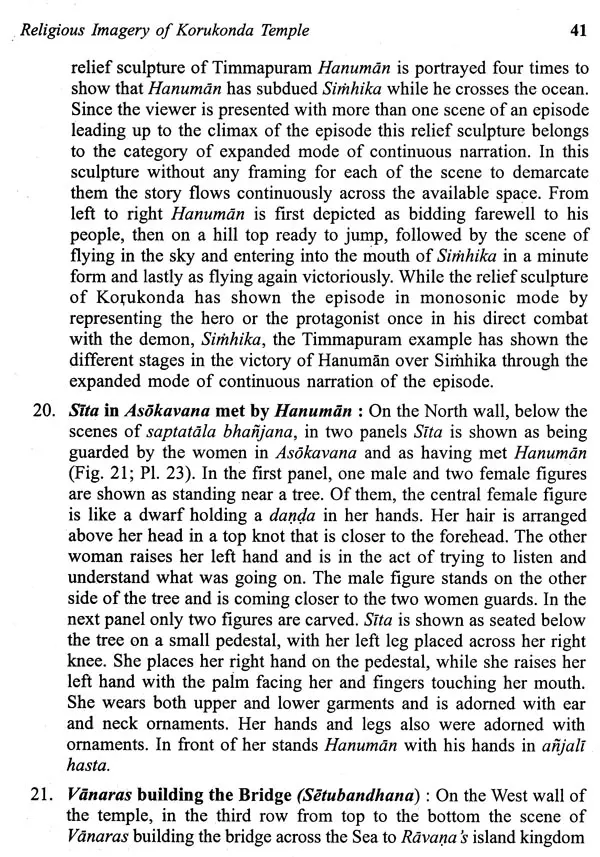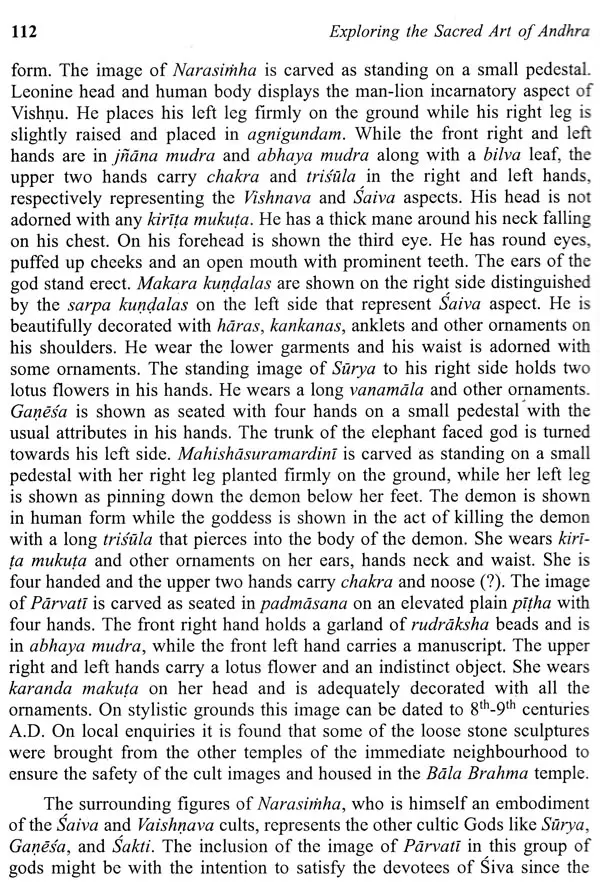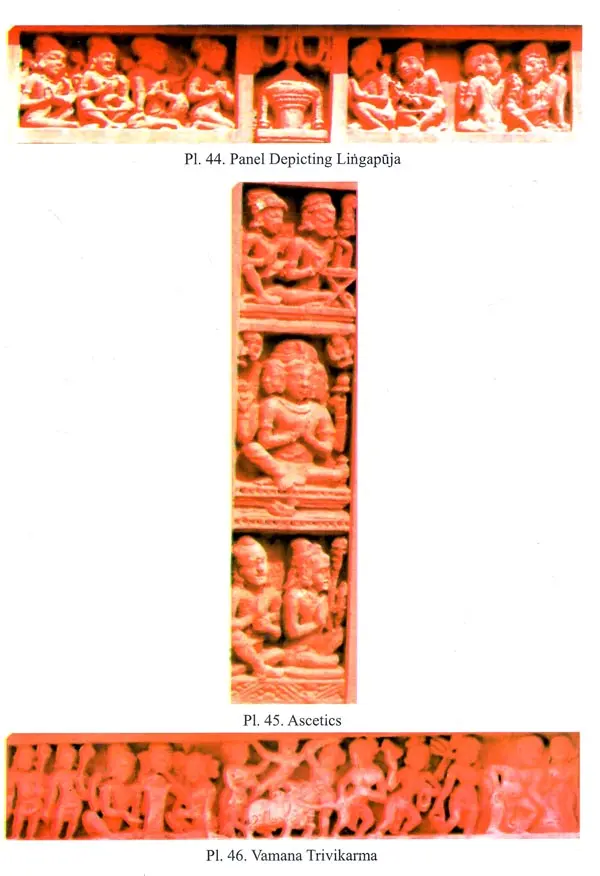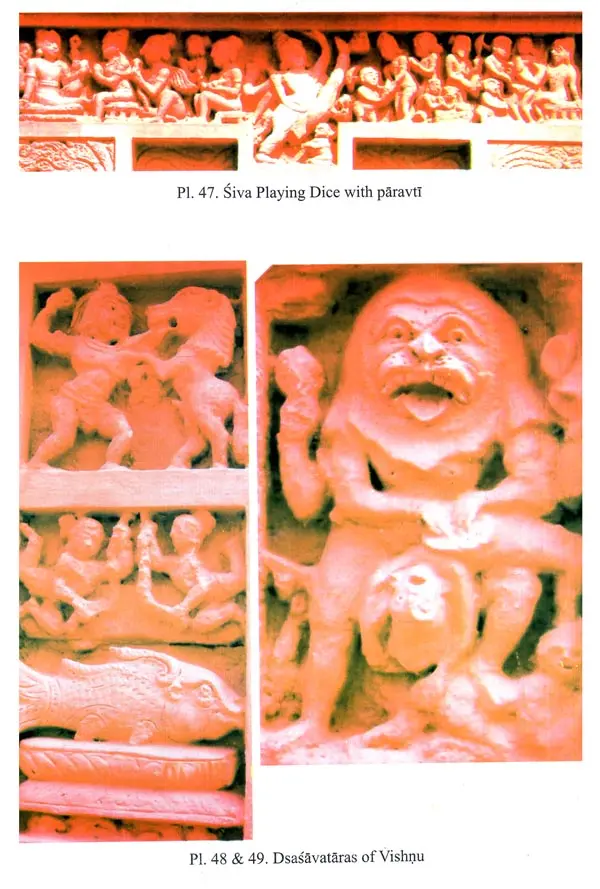About the Book The significant contribution of the Vaishnava temple at Korukonda and the Śiva temple at Bendi to the religious art of the country is hardly noticed. These temples situated in small villages, withstood the ravages of nature, time and human vandalism and preserve the sculptural art and architecture. The present work focuses on the iconological and interpretative study of the images and their contextual significance. The book offers a closer view of the relief sculptures of the temple at Korukonda as the themes are based on the epic Rāmāyaṇa. The different episodes of the Rāmāyana story depicted on the walls of the temple highlighting the heroism of Rama are intended to impress upon the minds of the devotees, the nature and character of an 'ideal hero'. It concentrates on the narrative scenes portrayed on the köshthas of the Nandiśvara temple at Bendi, which display the construction of new and variant myths as in the case of Śiva over powering the demon Gajasura, observance of cultic practices like the Linga puja by the followers of Pasupata Saivism etc. It focuses on the iconic schemes of the well-known Madhukēvara temple at mukhalingam and attempts to reinterpret the enigmatic images within a well integrated scheme, by bringing comparisons with the images of similar iconographical features noticed elsewhere. In this process, several earlier non-specified images could be seen in their proper context and for the first time identified and interpreted. The study of certain rare type of images like Tripadamurti, Ēkapada Trimurti and Sväbhishê kamürti noticed on the temples of Andhra is another special feature of the Book. Analysis of the images of Läkulīša and the development of the Pasupata cult in Andhra based on the stone and copper plate inscriptions are some such new interpretations offered in the Book. The Book is intended to serve as a source book for the future researchers working in the field of iconography, religion and art history of Andhra region. An exhaustive bibliography and a large number of line drawings and photographs add to the value of this Book.
Foreword Myneni Krishnakumari has authored so far ten books, edited two volumes and over one hundred and fifty research papers on different aspects of the history of Andhra region covering political, social, economic, religious and cultural history. She specializes in cpigraphy, art history, iconography and medieval Andhra History. She obtained her Ph.D. Degree from the Andhra University for her work on the Rule of the Chalukya-Cholas in Andhradesa in 1978 and D.Litt. degree from the same Univesity in 1999 for published works in History and Archacology. She is the first and only person to obtain the D.Litt. degree in History and Archacology since the establishment of the Department of History in 1931 in Andhra University. She has received several honours and distinctions in her academic career besides serving the Andhra University in different capacities as Head of the department of History and Archacology, Chariperson of board of Studies and the Member of the Executive Council of Andhra University. Presently she is the Professor in the Department of History and Archacology since 1990. She is a recipient of "The Best Researcher Award" in 1992 awarded by Andhra University, and "The Best Teacher Award" in 2001 given by the Andhra Pradesh State Government. She has undertaken many research projects funded by the Indian Council of Historical Research and University Grants Commission and successfully completed them. She has visited many countries and delivered guest lectures at the foreign Universities, besides involving herself in an international research project and is in collaboration with the Leiden University (the Nether Lands) and Cambridge University (UK). Presently, she is working on a UGC funded Major Research Project, "Interpretation of the Art of unknown Temples of Karmarashtra".
Preface To understand the culture of any region or country, one has to look into its visual imagery, be it sacred or secular. Like the Indian art, the art of Andhra is intimately blended with religious, literary and mythological traditions. Although attempts have been made earlier to study the temple art of Andhra region as a whole, still it remains to be imperfectly known owing to the vastness of the data and the wide variety of art forms, which resulted through the cultural influences from the neighbouring regions. Andhra has experienced the rule of the kings of different dynasties, whose origins at times may be different and belong to the regions outside Andhra. Certain new religious ideas, beliefs and cult practices developed during the medieval times got dispersed far and wide as a result of the changing boundaries of the Andhra region as well due to the royal policies.
Introduction This book contains twelve research papers that cover very vast time scale, starting from 5th-6th centuries to the 17th-18th centuries A.D. However, the subject matter of all these essays revolves around religious art. iconography, cultic practices and bronze images of Andhra region. In this book only the religious sculptures or icons are discussed, since it is the most visual aspect of f religion. Through the new insights into the cult objects and the new data taken up for the study, it provides a better understanding of the religious art of Andhra's past; both at the micro and macro levels. Since the iconography of the temples of Korukonda and Bendi was not subjected to any systematic study so far by the earlier art historians that had abundant iconographical wealth, they are studied in detail and their iconography is described after making a careful analysis.
Book's Contents and Sample Pages
